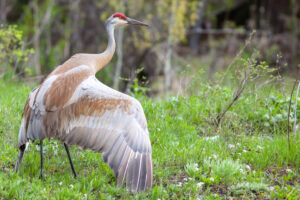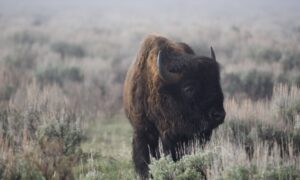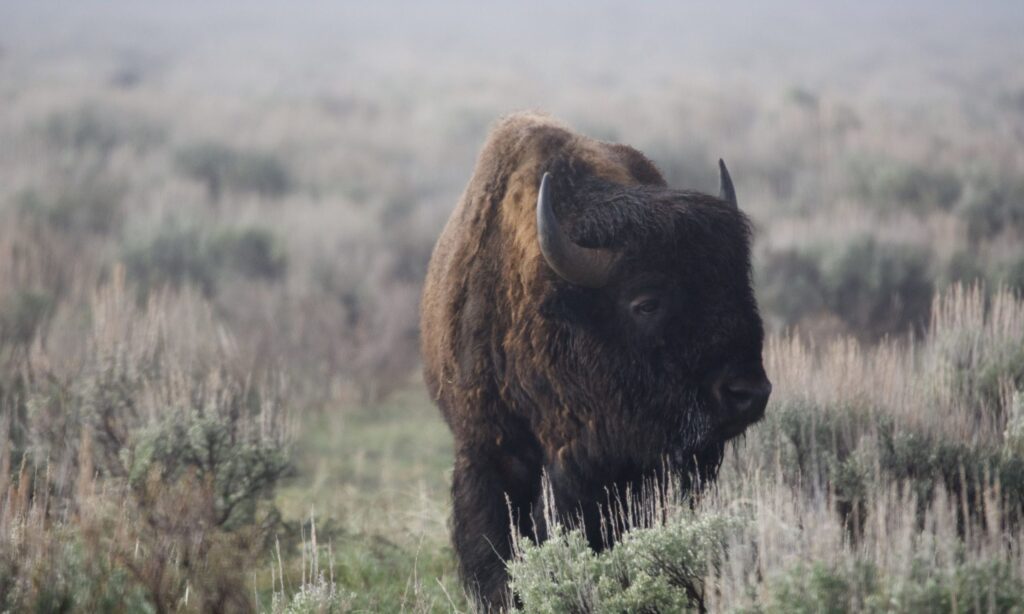It is typical to get a rainstorm or a series of storms in August that bump us out of summer, and into that transition between summer and fall.
Those events occurred between August 18th and August 21st. The precipitation that fell was mostly rain, but I did wake up one morning to a dusting of snow high on the Grand Teton, the highest peak in the Teton Mountain Range, and on the highest ridge of Sheep Mountain, on the opposite side of Jackson Hole in the Gros Ventre Mountains. Now instead of high daily temperatures in the eighties, the forecast is for low to mid-seventies. The rain has been extremely welcome, as it has been a very dry summer. I have even seen a few migrating tiger salamanders, a sign that they certainly approve of the recent precipitation.

Sandhill crane chicks have been one of my summer highlights. Sandhill cranes struggle with chick survival in Grand Teton National Park, as they are potential prey for the many land predators (foxes, coyotes, wolves, bears, badgers) and aerial hunters (eagles, hawks, falcons). This summer, I have been regularly watching two different crane pairs each with twin chicks. It is unusual for me to see any sandhill juveniles survive the summer.
And speaking of young animal survival, I have noticed an unusually high number of pronghorn (sometimes called pronghorn antelope) fawns this summer. A study done in Grand Teton National Park over 20 years ago observed that coyotes kill 80-85% of the pronghorn fawns in the ungulate’s first 3 weeks of life. The idea is that once the fawns get beyond that first critical three to four weeks of life, they can typically outrun predators. Are coyote population numbers down? Are coyotes utilizing other important food sources?
The Uinta ground squirrels are in hibernation now, the cost-benefit analysis having determined that the energy required to avoid predation outweighs the ever-decreasing digestibility of the valley’s plants. It’s remarkable that this abundant rodent food source is suddenly not available to Jackson Hole predators. Badgers, however, do have the digging skills to access hibernating ground squirrels even in winter.

We are at the height of the bison rut. The bison bulls are more vocal now than at any other time of the year, bellowing their ancient sounds like their Pleistocene relatives most likely did. Males are putting a wealth of energy toward monitoring female bison to see if they are in heat, and then courting them and defending them from other males. Battles between bulls can take a lot of energy at the very least and can lead to serious injury or even death. Wolves benefit greatly from scavenging on bison killed during the breeding season, as hunting elk this time of year is particularly difficult. Elk are a staple food for wolves, however, Greater Yellowstone Ecosystem wapiti have been eating high quality green vegetation for the past four and a half months, and have not had to walk in snow since April. In other words, the elk are in the best shape of their year.
Very soon, we will begin to hear bull elk bugle whole-heartedly, a sign that the breeding season has begun. An elk bugle is a great sound of wildness, and a reminder to Wyomingites to savor the sunny warm days of September because winter is coming.
-Kevin Taylor
Want to be the first to know what Kevin notices next? Or when new wildlife tours are launching? Sign up for our Wildlife Expeditions newsletter, Fresh Tracks, to receive the latest wildlife news, exclusive tour discounts, and more!


